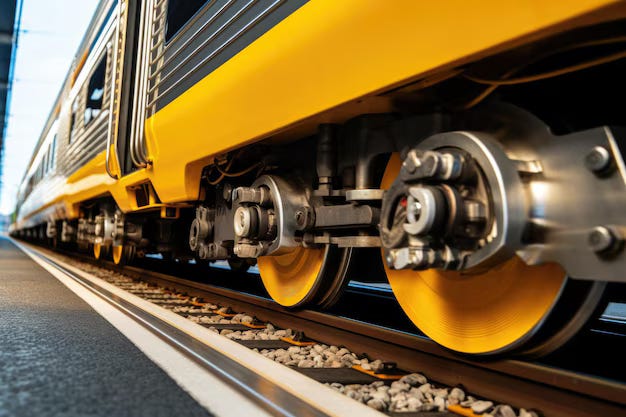I wouldn’t say I wait for it, but when the BNSF Railway TV commercial comes on, I stop what I’m doing and watch it. They haven’t changed it for a long time, but I love it just the way it is. There’s the train passing by. The beautiful train. There’s the slogan — “the engine that connects us.”
The railroads maybe had a more romantic feel when BN was Burlington Northern and SF was Santa Fe Pacific. They lost their names in a merger almost thirty years ago. But that moving BNSF train still holds a certain, indefinable romance for me. It’s an American freight train, not the Orient Express. It doesn’t go to Paris or London or Istanbul and you can’t buy a ticket for an exotic ride. Still, there’s a romance about it — the vast distances it covers in a vast nation, carrying things from one place to another.
All the numbers are there on the BSNF website: Thirty-two thousand five hundred route miles. Three hundred and ninety “predecessor railroads.” You can read about their articulated 10-unit spine cars for long-distance intermodal service, and their intermodal hub centers which consolidated hundreds of piggyback ramps.
It’s hard to be interested in most of what BSNF wants to tell a visitor to their website. But their U.S. map — the map of all those route miles and station stops with names like Winslow and El Paso and Minot and Billings and Havre, Salt Lake City and Spokane, Denver and Lincoln and St. Louis, New Orleans and Houston — all places I’ve passed through (yes, even Winslow and Havre and Minot) in an automobile or via airplane on one journey or another — suggest what it feels like to be an American, to be familiar with the distances, the plains, the mountains, the mesas, the continental passes, the oceans.
Winslow was for a bowl of pozole at the La Posada Hotel and Havre was for an overnight stay in the expensive room with a hot tub at the Best Western, the only room left in town because of a high school baseball tournament, and Minot was to go up and down 4th Avenue NW looking for John’s grandparents’ onetime residence.)
In the houses in the Ann Arbor area where I’ve lived over the last thirty-five years or so, the Amtrak whistle could usually be heard once or twice a day, brighter or duller depending on the humidity in the air.
Where we live now, we hear no whistle (no intersection nearby) but we do hear the trains themselves — that particular sound of wheels on rails, turning, turning, turning, rolling, rolling, rolling, carbon steel upon carbon steel, a rhythmic sound known round the world, the Amtrak three times a day, both east and west, and a few freight trains, one you can’t miss at two a.m. unless you are sleeping really deeply.
It’s the Amtraks that I most love. I know exactly where they are going — Detroit to the east and Chicago to the west. There is nothing exotic or mysterious or unknown about their destinations. But they suggest a kind of purpose, a serious intention to go from place A to place B, and to get there on time. The train heading east is usually quite empty, the train heading west quite full. I have been on both of them, the one to Chicago many times, the one to Detroit just once.
I intend to go again, both ways.
It’s not about the views exactly, although the views from the train are quite different from the views on the freeway. On the train you see, close up, what feels more human than the rows of suburban look-alike mini-mansions off in the distance; from the train you see the most ordinary backyards of the Midwest, the frame garages, the old clotheslines, the child’s bicycle, the rock garden, the shovel leaning on a tree, left out in the cold.
I don’t think I type faster as the train goes by, but it does remind me that destinations are a good thing, and that if I did type faster I would find the right words to end my memoir.
*





Jane
As you may already k
I agree. Winslow was most unusual!